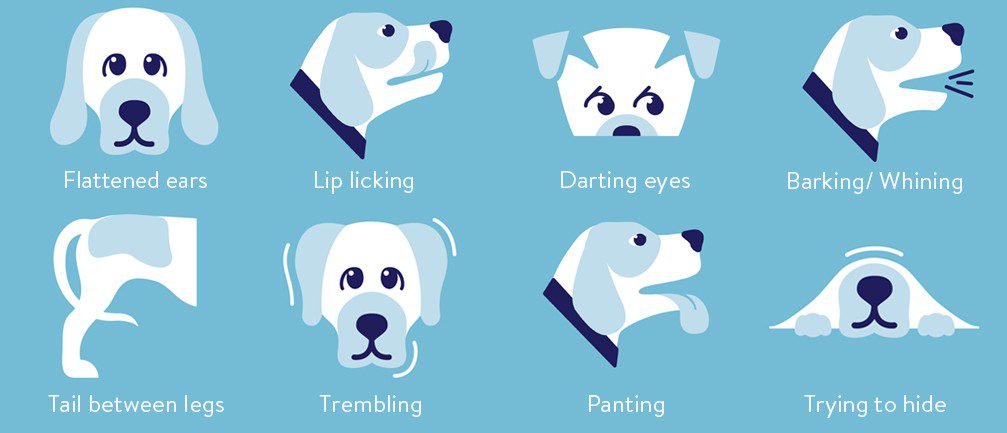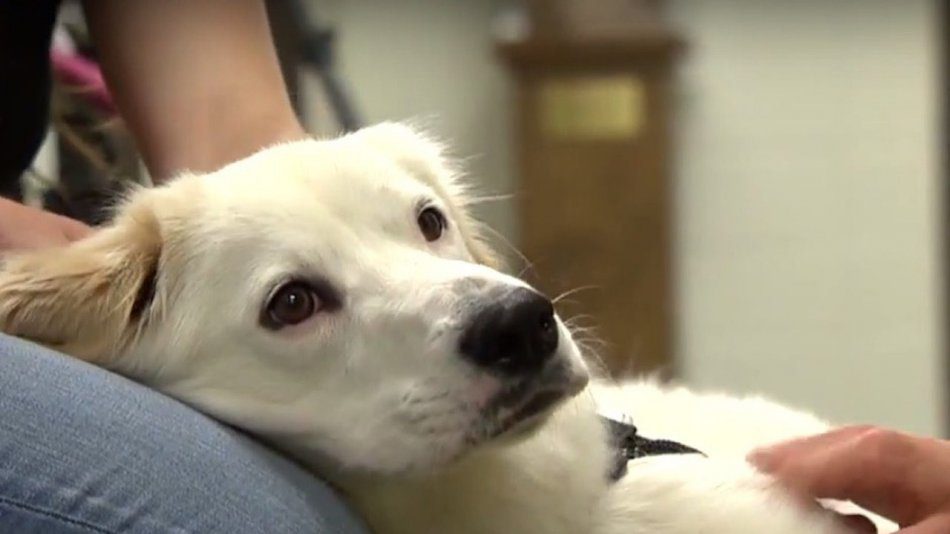
Giunsa nimo pagkahibalo kung ang usa ka iro na-stress?
Stress is an integral part of the life of any being. However, it is worth distinguishing between eustress, which has a positive effect on vitality and promotes the mobilization of forces, and distress, which has a destructive effect on the body.
Like us, dogs experience stress. How do you know if your dog is stressed?
Litrato: google.by
Kaundan
Mga Hinungdan sa Kapit-os sa Mga Iro
Excessive stress in dogs can be caused by the following reasons:
- Kamingaw.
- Kakapoy.
- Close contact that the dog would like to avoid.
- Thirst or hunger (both lack of food and water, and cruel training methods based on depriving the dog of water and food “for more motivation”).
- Bugnaw.
- Kulang sa pagtagad.
- Kahadlok.
- Excessive stimulation (physical or mental), overload.
- Ang kalaay.
- Sakit.
- Pain.
- Punishments.
How does stress in dogs manifest itself physiologically?
When a dog experiences stress, changes occur in its body:
- The heart pumps blood faster, the heartbeat accelerates.
- The depth and rate of breathing increase.
- Muscles contract more strongly.
- Reduced blood flow to the bladder and intestines.
- The blood vessels constrict.
All this can not but affect the behavior of dogs.
How does stress affect dog behavior?
We can talk about the fact that the dog is experiencing excessive stress when the dog cannot influence the situation in which it finds itself, or does not know what awaits it next, that is, the dog’s world is full of dangers, unpredictability and chaos.
As a rule, in response to a threat, animals exhibit behavior that fits into the 4F framework:
- run (flight) – cowardice, excessive timidity
- fight (fight) – aggression, including seemingly unmotivated
- fawn (fawn) – for example, the dog shows signals of reconciliation or makes a puddle when the owner comes home
- or freeze.
And if the first three are striking (in any case, to a person who understands the language of dogs at least a little) and there is a chance that the owner will turn to a specialist, then fading is often ignored – but in vain.
The freezing reaction in dogs is dangerous because outwardly the animal may look normal, it just suffers from infectious diseases, then the hair falls out, then dandruff appears. And it is worth curing one, as the other immediately becomes aggravated …




Litrato: google.by
Giunsa nimo pagkahibalo kung ang usa ka iro na-stress?
There are signs by which you can determine the state of stress in dogs.
- Dilated pupils (the so-called “wild” look).
- Paspas nga pulso.
- Gahi nga gininhawa.
- Increased sweating of the paws (may leave marks on the floor).
- Pagbarog.
- Kabalaka.
- Itching and/or dandruff.
- The dog chews on the leash, bites the owner on the clothes, etc.
- Nadugangan ang kauhaw.
- The dog smells bad.
- Dili maayo nga ginhawa.
- Licking or biting paws and/or other parts of the body.
- Destructive behavior (spoiling things, etc.)
- Pagkalibog sa ihi.
- Tense nga kaunoran.
It should be borne in mind that reactions in different dogs manifest themselves in different ways, but these signs should alert the owner.
It is important to pay attention to any manifestations of stress in the dog and, if you cannot help the pet on your own, seek help from specialists.







